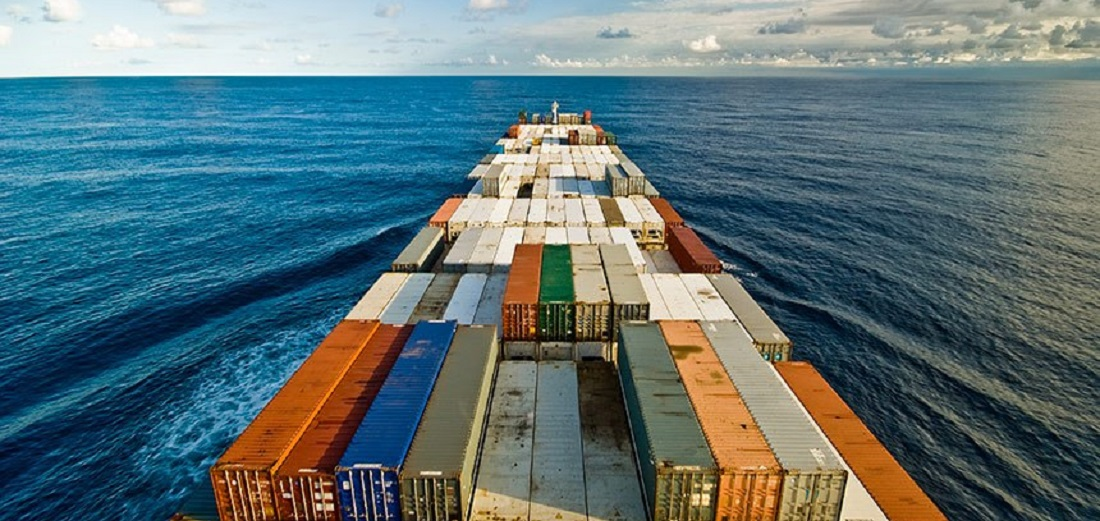
Russia-India trade route through Central Asia moves forward
Mar, 12, 2024 Posted by Gabriel MalheirosWeek 202411
Work on a long-planned shipping route connecting Russia with the Middle East and South Asia is moving forward as sanctions-hit Moscow seeks alternative markets for its products, creating a wide-ranging geopolitical ripple effects.
The 7,200-kilometer International North-South Transport Corridor will run from St. Petersburg in northwestern Russia to ports in southern Iran, and from there to Mumbai. This will provide a shipping route that bypasses Europe and is less than half as long as the current standard path through the Mediterranean Sea and the Suez Canal.
The corridor has three routes between Russia and Iran. The main western route passes through Azerbaijan via rail and road, while the central route transits through the Caspian Sea by ship and the eastern path follows the Caspian Sea’s eastern shore.
The western route in particular has seen substantial progress. Azerbaijan’s Ministry of Digital Development and Transport told Nikkei that rail freight grew roughly 30% last year, while road freight rose 35% to 1.3 million tonnes. It sees total freight traffic potentially reaching 30 million tonnes per year.
Azerbaijan is rushing to build domestic infrastructure to boost shipping on the western route. The country plans to construct a railway and road crossing the Aras River, which runs along its border with Iran, and a shipping terminal in the border region is being expanded, with work slated to finish in the third quarter of this year, according to the transport ministry.
A four-lane toll road connecting the Azerbaijani capital of Baku with the Russian border opened in October, following the March 2023 opening of a customs checkpoint in the area.
“The North-South Transport Corridor will attract mutually beneficial trade and investment, and open up new possibilities for cooperation between countries,” the ministry said.
Though plans for the corridor were first agreed on by Russia, Iran and India back in 2000, recent geopolitical shifts have helped push the project forward. Western sanctions imposed on Russia after its invasion of Ukraine have Moscow turning toward Asian and Middle Eastern export markets, and sanctions have driven Iran closer to Russia and Asian countries as well.
Moscow and Tehran signed an agreement last May to build a railway in northern Iran that will fill in a long-missing link in the route.
Providing a further boost to the corridor is the growing danger of shipping from Europe to Asia via the usual Suez Canal route, as pro-Iranian Houthi rebels attack commercial ships in the Red Sea.
“Given what is seen in the Red Sea region, the North-South [corridor] will gain global significance,” Russian Deputy Prime Minister Alexei Overchuk told Russian media in January.
It is “in the interest of the global economy that this corridor progresses,” Indian External Affairs Minister S. Jaishankar said after a meeting in December with his Russian counterpart.
The project has affected military developments in the region as well. Iran, which would also benefit from developing the corridor, has supplied Moscow with numerous drones and other equipment.
And Azerbaijan’s closer relationship with Russia appears to have given it a crucial advantage in its conflict with neighboring Armenia.
The historically disputed region of Nagorno-Karabakh has been at the center of ethnic conflict between Azerbaijan and Armenia since the end of the Soviet era. Azerbaijan has taken control of the region through military clashes in 2020 and 2023. Armenia received no military support from Russia despite counting Moscow as an ally.
The North-South corridor has “heightened Azerbaijan’s strategic importance to Russia,” an Armenian political commentator said.
Azerbaijan is also an important point along the Middle Corridor, a route linking Europe with China via the Caspian Sea, and has gained in global importance as a supplier of oil and natural gas via a pipeline to Europe.
Armenia, alarmed by the rapid geopolitical changes spurred by the North-South corridor, has put forward a proposal of its own. Prime Minister Nikol Pashinyan in October presented the “Crossroads of Peace” project, a north-south and east-west network of rails and roads through which Armenia hopes to have its borders with Azerbaijan and Turkey reopened.
-
Blog News (ENG)
Sep, 26, 2022
0
Convoluted logistics obstruct melon exports in Brazil
-
Economy
Dec, 23, 2022
0
Milder prices to bring Brazilian import values down a notch, says Inter
-
Other Cargo
Mar, 11, 2022
0
Fertilizers: Yara ceases purchases from producers connected to sanctions in Russia
-
Shipping
Oct, 04, 2023
0
Maersk ship cuts short trip after container catches fire


